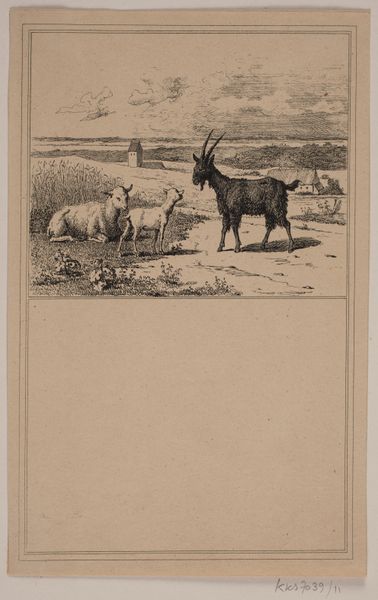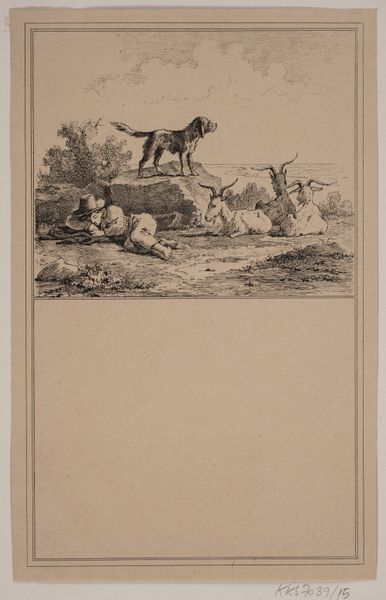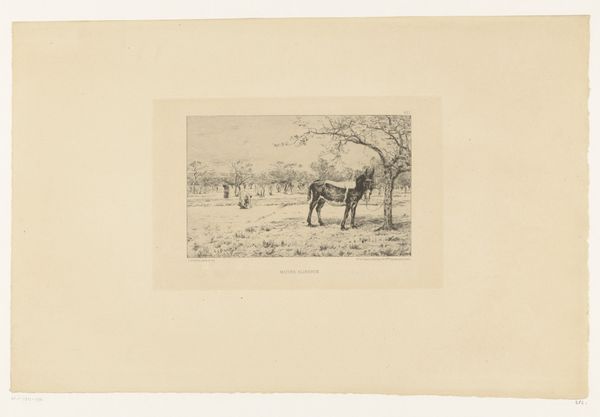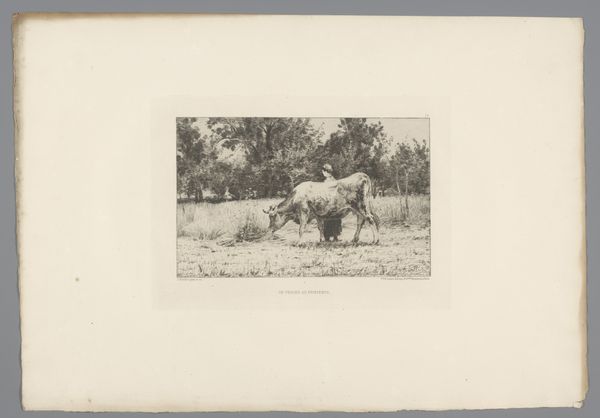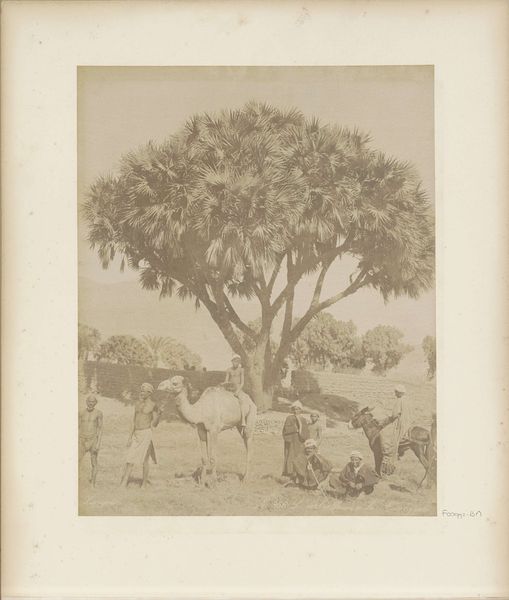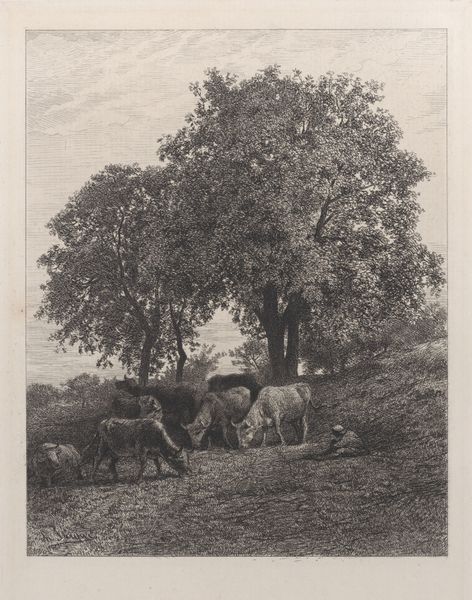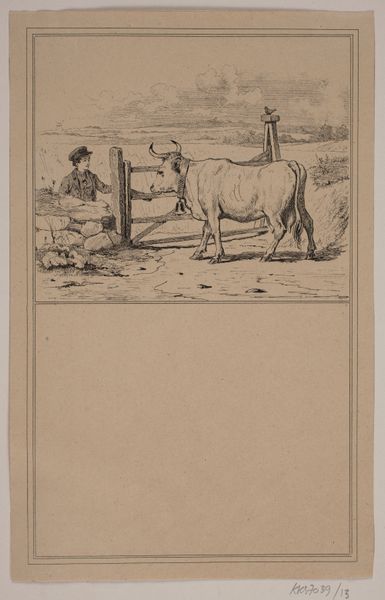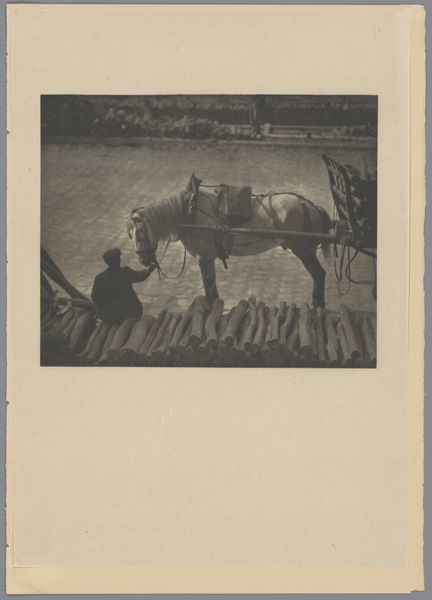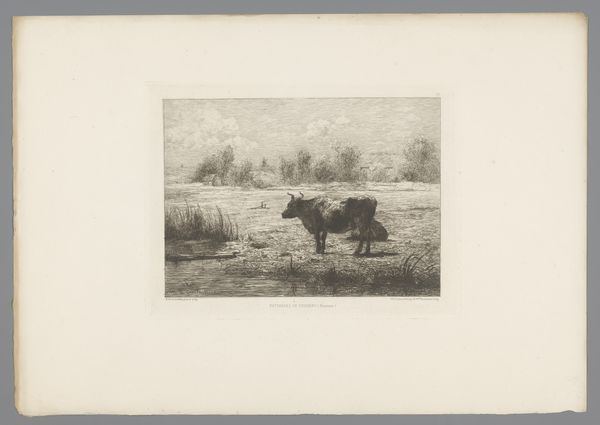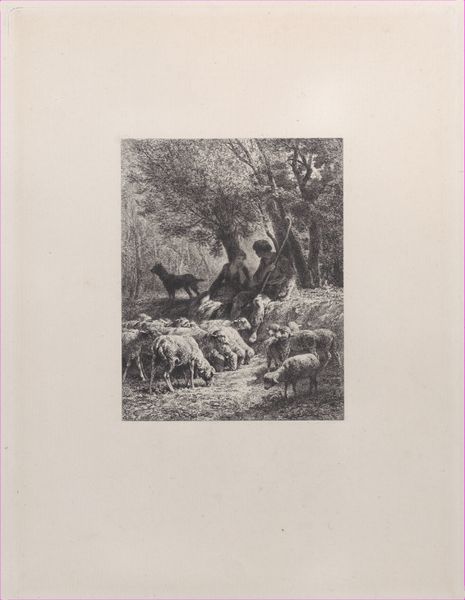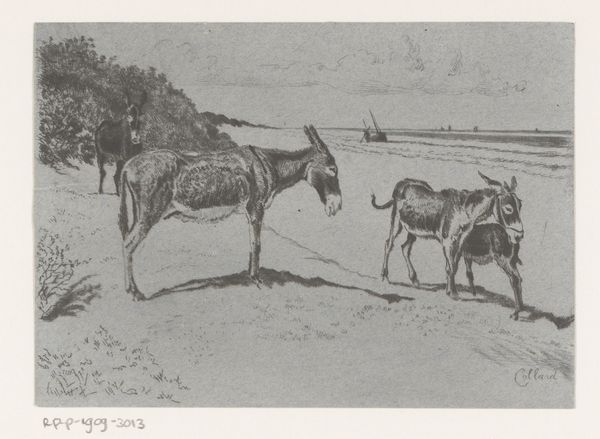
print, photography, gelatin-silver-print
#
animal
# print
#
landscape
#
photography
#
gelatin-silver-print
Dimensions: height 166 mm, width 107 mm
Copyright: Rijks Museum: Open Domain
Curator: Well, if it isn't winter in visual form! What do you make of this photographic print showing "Wild Deer Being Fed in Winter," dating to between 1850 and 1900? I believe it is by A. Wille. Editor: It feels...bleakly tender, I think? All that frost and faint light – it has the quality of a memory fading, those deer suspended in a silvered stillness. The scene suggests care too, providing sustenance during hardship, like small acts of kindness blooming amidst winter's chill. Curator: A "silvered stillness," I like that. The image seems to be as much about survival as it is about landscape. The deer, for me, become symbols of resilience, heads bowed in the snow but bodies sturdy. Does the image trigger any associations or connections to older symbologies around deer for you? Editor: Immediately! The deer is practically ancient as a symbol – its presence rippling across cultures. Think of Artemis, the huntress, or even older cave paintings. The deer's link to wilderness and gentleness...to be fed in winter flips a protection-of-nature idea on its head, hinting perhaps at human impact already shaping even 'wild' spaces. It could almost be a quiet commentary on our entangled relationship with nature, offering assistance but in a way also highlighting a need brought on by, well, us. Curator: That intertwining—we see similar ideas expressed across art and philosophical ideas of that period. The camera captured them in their apparent element, a constructed tableau of winter beneficence. It suggests a very ordered, almost staged, view of humanity and nature. Editor: Ordered is the key. In some indigenous narratives the deer is portrayed as almost divine. What has that divinity come to mean as the earth has warmed. Maybe they should reframe the image as a warning. Curator: I hadn’t considered that contemporary inflection—I like it a lot. Seeing the staged image next to what we are learning today can allow the work to morph into new, environmentally pointed visual meanings. Editor: Yes, and perhaps also the future deer are waiting on, where our help becomes our species burden to bear. A small snapshot opens bigger questions...that's the sign of powerful art, even in early photographic form!
Comments
No comments
Be the first to comment and join the conversation on the ultimate creative platform.
